The eruption that devastated Tonga on 15 January lasted just 11 hours, but it will take years for scientists to work out exactly what happened during the cataclysmic explosion — and what it means for future volcanic risks.
The volcano, named Hunga Tonga–Hunga Ha‘apai, sent a plume of ash soaring into the upper atmosphere and triggered a tsunami that destroyed homes on Tonga’s nearby islands. Reverberations from the eruption circled the globe multiple times.
The extraordinary power of the blast, captured by a range of sophisticated Earth-observing satellites, is challenging ideas about the physics of eruptions. Researchers are finding it hard to explain why the volcano sent a cloud to such heights, yet emitted less ash than would be expected for an eruption of such magnitude. And the shock waves that rippled through the atmosphere and oceans are unlike anything seen in the modern scientific era.
The eruption of Hunga Tonga–Hunga Ha‘apai is forcing scientists to rethink their ideas on the hazards posed by the many submarine volcanoes that lurk beneath the waves of the Pacific Ocean.
“It just basically rips the Band-Aid on our lack of understanding of what’s happening under water,” says Nico Fournier, a volcanologist at GNS Science in Taupo, New Zealand.
Fresh danger
The eruption, which happened just 65 kilometres from the Tongan capital of Nuku‘alofa, has been a disaster for the more than 100,000 people living in Tonga. They are working to clear away the thick layer of ash that blanketed everything, to establish clean drinking-water supplies and to recover from the crop damage, estimated to equate to nearly 39 million Tongan pa‘anga (US$17 million). At least three people have died in Tonga as a result of the eruption. The crisis is being compounded by COVID-19, with Tongans facing their first wave of cases, which started after relief ships arrived from other countries.
But earthquakes continue to shake the region, and the volcanic danger might not be over. Preliminary studies of ash from the 15 January eruption suggest that it was fed by a fresh batch of magma rising from inside Earth. Hunga Tonga–Hunga Ha‘apai could remain active for some time, with uncertain effects on the people of Tonga.
Geoscientists have limited ability to provide people in the region with a good sense of the future risks. “It’s a really difficult situation of wishing volcanology could give more to the local people,” says Janine Krippner, a volcanologist with the Smithsonian Institution’s Global Volcanism Program in Washington DC, who is based in New Zealand. “But right now, that’s not the case.”
Most of Hunga Tonga–Hunga Ha‘apai lies under water. It rises more than 2,000 metres from the sea floor and is part of the Tonga–Kermadec volcanic arc. This string of mostly underwater volcanoes sits above a massive geological collision zone, where the western edge of the Pacific plate of Earth’s crust dives beneath the Indo–Australian plate. The edge of the Pacific plate heats up as it sinks into the planet’s depths, and molten rock rises to feed the volcanoes of the Tonga–Kermadec arc.
Geological evidence shows that large eruptions have convulsed Hunga Tonga–Hunga Ha‘apai about once every millennium, with huge blasts that occurred in around ad 200 and ad 1100. The past century has brought smaller ones, in 1937 and 1988. By that point, the top of the volcano was peeking out above the waves in the form of two small islands, named Hunga Tonga and Hunga Ha‘apai.
Then, in 2009, the volcano began spitting ash and steam in an eruption at Hunga Ha‘apai. In December 2014 and January 2015, another eruption formed new land that connected the two islands, forming a single landmass1,2.
Several research teams visited the new island soon after it formed and gathered samples of volcanic ash and rock. Geochemical analysis of that material, described in a paper in Lithos3, found that the 2009 and 2014–15 eruptions involved molten rock that had not risen recently from the great depths of Earth’s mantle.
Instead, it had spent some time at a geological way station, a magma chamber located 5–8 kilometres deep in Earth’s crust. While sitting there, the magma had gone through some tell-tale chemical changes, almost like wine ageing in a barrel, before ultimately erupting onto the surface.
The magma that erupted this January was different. Shane Cronin, a volcanologist at the University of Auckland in New Zealand, and his colleagues have analysed ash from the eruption that military relief workers scooped up near the airport on Tonga’s largest island. Chemical analysis shows that it differs from that of the 2014–15 eruptions. Cronin says that the fresh magma rose quickly, without spending much time undergoing chemical changes in the buried magma chamber.
Geologist Taaniela Kula and his colleagues at the Tonga Geological Services in Nuku‘alofa have been collecting ash samples from islands across Tonga that Cronin and others are analysing. By studying ash from different islands, including noting how thickly and how widely it is distributed, researchers will be able to build up a better picture of how the eruption unfolded.
Surprisingly, there seems to have been relatively little ash emitted, given the size of the blast. That might be a result of the environment in which Hunga Tonga–Hunga Ha‘apai erupted: under water, but at a relatively shallow depth.
The water factor
Volcanoes in deep water rarely erupt through the ocean surface in big blasts, because the pressure of the overlying water prevents gas bubbles from forming and growing with explosive force. But the volcanic vent that erupted at Hunga Tonga–Hunga Ha‘apai on 15 January was just tens to 250 metres deep. That’s shallow enough that the water didn’t suppress the power of the blast, but deep enough for the erupting magma to encounter a lot of water.
Water can fuel explosive eruptions by flash-heating to form steam, which expands quickly. In this way, it efficiently transforms thermal energy from magma into the kinetic energy of an eruption, says Michael Manga, a geoscientist at the University of California, Berkeley. “Some of the most powerful eruptions have been through water,” he says.
Another important factor is how much volcanic gas is mixed into the magma before it erupts. A gas-rich upwelling of magma might have fed the 15 January eruption by providing a large number of bubbles to fuel the explosion, says Raymond Cas, a volcanologist and emeritus professor at Monash University in Melbourne, Australia.
The eruption of Hunga Tonga–Hunga Ha‘apai is unusual in that it combined features not usually seen together, says Cas. Volcanologists know of other examples of eruptions that occurred under water, or under snow and ice, and thus incorporated water. Scientists have also seen extremely high eruption plumes that towered into the atmosphere. But Hunga Tonga–Hunga Ha‘apai is a unique example of both things happening together. It might ultimately come to serve as the prototype of a newly recognized type of eruption style, he says.
Most submarine eruptions don’t produce particularly high plumes. For instance, in 2012 the massive deep-sea eruption of Havre volcano, north of New Zealand, produced mainly a huge floating collection of lightweight pumice stones4. That eruption occurred at a depth of more than 900 metres. “We have relatively few cases where we see large plumes that breach the ocean surface,” says Kristen Fauria, a volcano scientist at Vanderbilt University in Nashville, Tennessee.
Yet the Hunga Tonga–Hunga Ha‘apai eruption plume soared to a height of at least 30 kilometres, well into the upper atmosphere, or stratosphere. That’s so high that researchers have been scrambling to understand what long-term impact it might have. High-resolution satellite imagery is allowing them to track how ash, gas and certain chemical species are drifting through the atmosphere — in much more detail than they could in 1991, when Mount Pinatubo in the Philippines erupted even more powerfully than Hunga Tonga–Hunga Ha‘apai. “We have never seen anything like this,” says Anja Schmidt, a volcanologist at the German Aerospace Center in Oberpfaffenhofen.
The Tonga volcano didn’t emit enough sulfur dioxide to change global climate, as eruptions from some other volcanoes have. It expelled an estimated 400,000 tonnes of SO2, whereas the 1991 eruption of Pinatubo ejected nearly 20 million tonnes. That blast temporarily cooled the planet by nearly 0.5 °C, as the sulfur formed sulfate particles that reflected some of the Sun’s radiation back into space.
One possible explanation for the discrepancy is that much of the SO2 from Hunga Tonga–Hunga Ha‘apai might have ‘fallen out’ of the plume at low altitudes, before the plume got too high. But Hunga Tonga–Hunga Ha‘apai did throw ash high into the stratosphere, and researchers will be looking for signs of any impact on climate, Schmidt says. They will also be watching to see whether the volcanic material causes any destruction of stratospheric ozone, and whether the atmospheric waves the eruption unleashed affect atmospheric circulation patterns in the coming months.
Early findings could come from balloon experiments lofted into the Tongan eruption plume. Several research teams have already launched balloons carrying instruments from the island of La Réunion in the Indian Ocean. One such effort, led by the US National Oceanic and Atmospheric Administration, was able to measure volcanic particles up to a height of 28 kilometres as the plume drifted over La Réunion, says team member Elizabeth Asher, an atmospheric scientist at the Cooperative Institute for Research in Environmental Sciences in Boulder, Colorado. That’s so high that she expects to see the eruption’s atmospheric effects to linger for longer than they would after less-powerful eruptions.
Ripple effects
Another aspect that could reshape volcanology is the way in which Hunga Tonga–Hunga Ha‘apai unleashed a rich variety of waves that rippled through the oceans and the atmosphere. The reverberations it sent around the world are reminiscent of those seen after the 1883 eruption of Krakatau in Indonesia, says Alan Robock, a climate scientist at Rutgers University in New Brunswick, New Jersey. The eruption last month triggered pressure waves and gravity waves in the atmosphere and tsunami waves all around the Pacific Ocean — even in distant ocean basins. GPS satellites also detected disturbances in the ionosphere, the layer of the atmosphere that lies above the stratosphere, starting at a height of 80–90 kilometres.
“There are huge pieces of this puzzle that we haven’t quite managed to pull together,” says Fournier.
The challenge now is to gather enough data to complete the puzzle. Volcanologists would normally monitor an active volcano using seismometers to study earthquakes in the surrounding area. There are currently no active seismometers in Tonga, so the large quakes that have been happening around Hunga Tonga–Hunga Ha‘apai since the 15 January eruption have not been tracked in much detail. The data that exist, however, suggest that the quakes are generated by fresh magma rising into the crust to refill the reservoir that was emptied by the large eruption, says Cronin.
Another priority is to survey the sea floor around the volcano to see which parts of its underwater structure have blown up or otherwise changed since previous surveys. Satellite radar imagery suggests that the top part of the volcano has subsided by at least 10 metres, Cronin says. But it is too dangerous to approach the volcano to do a scientific survey just yet.
Some early data might come from relief ships that have been travelling to and around Tonga, such as the one tasked with repairing the submarine cable that connects Tonga to Fiji. This was severed during the eruption, cutting off international communications. The cable might have been buried by a landslide coming off the side of the volcano, or cut in several places.
Foremost in everyone’s minds is what Hunga Tonga–Hunga Ha‘apai might do next. A group of international experts is providing information to the Tonga Geological Services to help the Tongan government to assess the risk and decide what to do. The researchers are weighing up three possible scenarios: the eruption could end, it could continue at a low level or there could be another massive blast. “All these scenarios are still live,” says Cronin.
Regardless of what the immediate future holds for this particular volcano, the eruption has volcanologists rethinking the hazards of submarine volcanoes more broadly, says Schmidt. “It’s a stark reminder that these kinds of volcanoes exist, that they pose a hazard, and that they are understudied.”





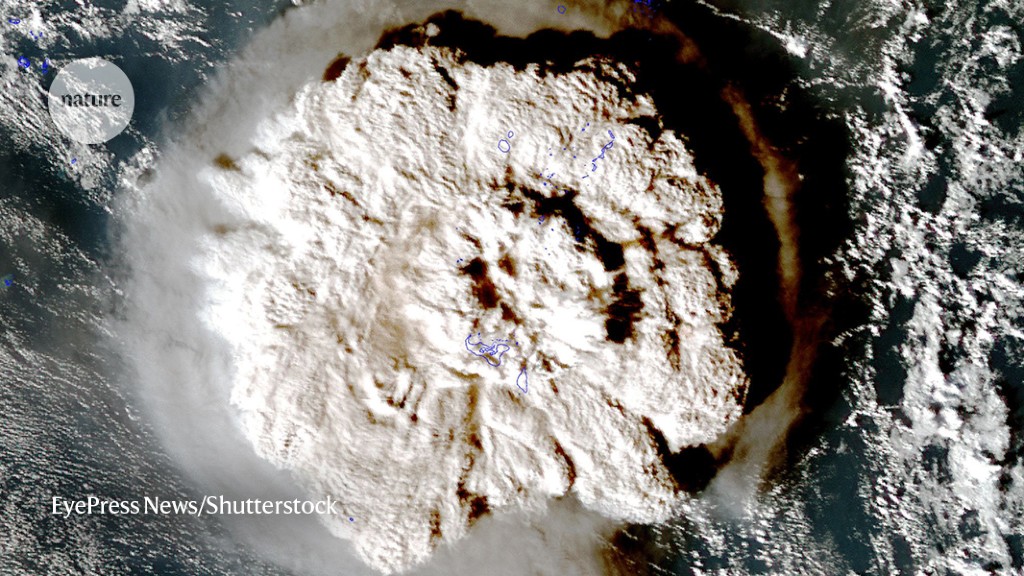
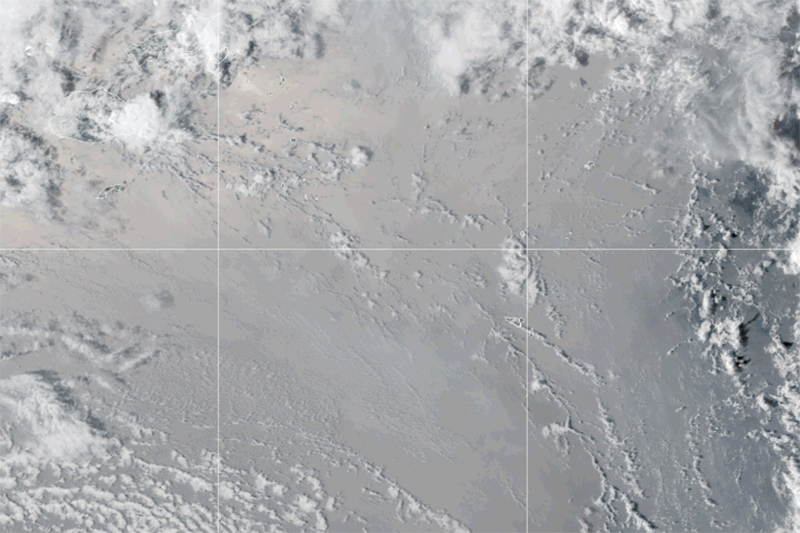
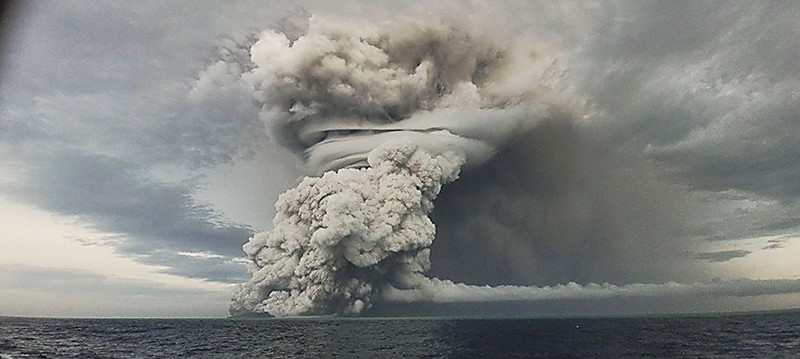
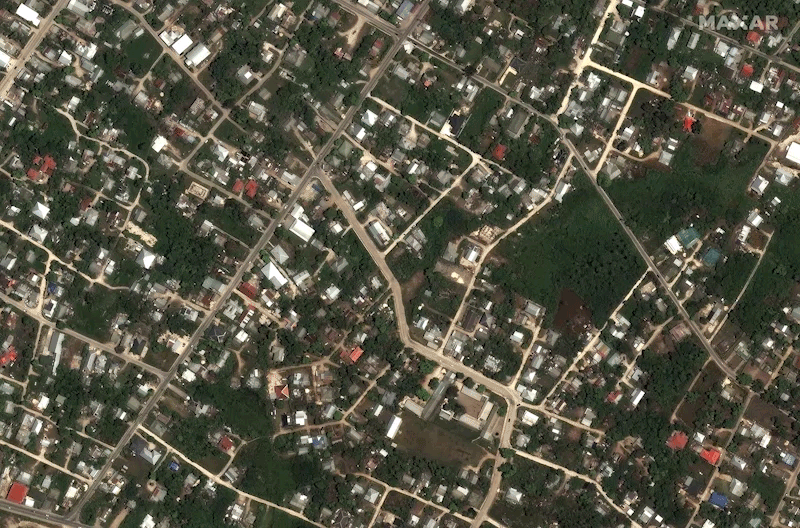
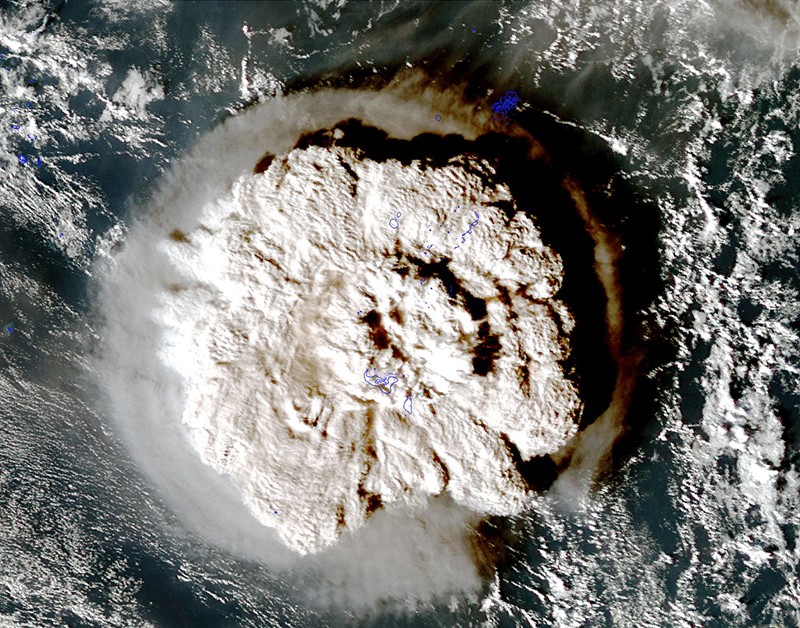
More News
Star Formation Shut Down by Multiphase Gas Outflow in a Galaxy at a Redshift of 2.45 – Nature
Garden-variety fungus is an expert at environmental clean-ups
Air-travel climate-change emissions detailed for nearly 200 nations